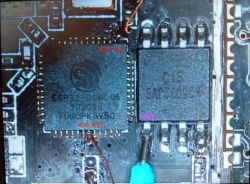dondu wrote: I just read the article indicated in the first post and in it:
Well, that's exactly what it said, but it didn't include any more information, that it requires
direct physical access to the MCU in the device in question and requires "some"
modifications in the pcb itself and in some cases
opening the metal case ESP32, if there is one - I'm not referring to the simple and cheap developer boards from AliExpress on which "penetration" tests have been performed, because that was simpler.
Furthermore, Espressif's recommendations were and are clear on ESP32 security (as long as one needs, understands and uses them):
• Use per-device unique keys for Secure Boot and Flash Encryption.
• Generate per-device unique keys stored in flash for application uses, rather than using a single shared key across all devices. .
Following the above rules ensures that "breaking" one ESP32 in one unit of a given device, will not result in "breaking" the security in all other ESP32s in the same devices i.e. with the same firmware. The wise will listen and the foolish will 'save'.
This is what one of the 'hacking' steps looks like after removing the ESP32's metal casing:

.







